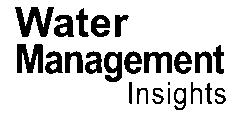In the heart of Iran, a nation grappling with the triple challenge of water scarcity, energy demands, and food security, a groundbreaking study has emerged, offering a beacon of hope for sustainable development. Led by Fatemeh Momeni Mahmouei, a researcher at the Department of Economics, Faculty of Economic and Administrative Sciences, Ferdowsi University of Mashhad, the study published in the journal ‘آب و توسعه پایدار’ (Water and Sustainable Development) presents an integrated model that could revolutionize how Iran manages its precious resources.
Iran, an arid and semi-arid country, faces a delicate balance of natural resource supply, threatened by unsustainable management, climate change, and prolonged droughts. The study, employing a grounded theory approach, involved in-depth interviews with 37 experts, revealing a complex web of factors exacerbating the vulnerability of water, energy, and food resources. “The vulnerability of water, energy, and food resources in Iran is aggravated by population growth, economic growth, excessive exploitation, management factors, climate changes, governance, sanctions, and political issues,” Mahmouei explains.
The research identifies 17 key categories and 264 primary codes, painting a comprehensive picture of the challenges and potential solutions. At the heart of the proposed model is the integration of public, private, and civil institutions for effective planning and management. This convergence is crucial for addressing the interconnected nature of water, energy, and food security.
For the energy sector, the implications are profound. The study underscores the need for optimal resource management and the adoption of appropriate technologies. This could mean a shift towards more sustainable energy practices, such as renewable energy sources that are less dependent on water, like solar and wind power. “It is necessary to change and modify the approach and method at several levels,” Mahmouei emphasizes, highlighting the need for a holistic approach that considers the interdependencies of water, energy, and food.
The study also emphasizes the importance of education, social capital, and stakeholder interaction. By fostering a collaborative environment, Iran can better navigate the complexities of resource management. Population policies are also highlighted as a critical area for improvement, suggesting a need for strategic planning to balance resource demands with available supplies.
The integrated model proposed by Mahmouei and her team could serve as a blueprint for other arid and semi-arid regions facing similar challenges. By addressing the nexus of water, energy, and food, the study offers a pathway to sustainable development that could have far-reaching commercial impacts for the energy sector. As the world grapples with climate change and resource scarcity, the insights from this research could shape future developments in the field, encouraging a more integrated and sustainable approach to resource management.
